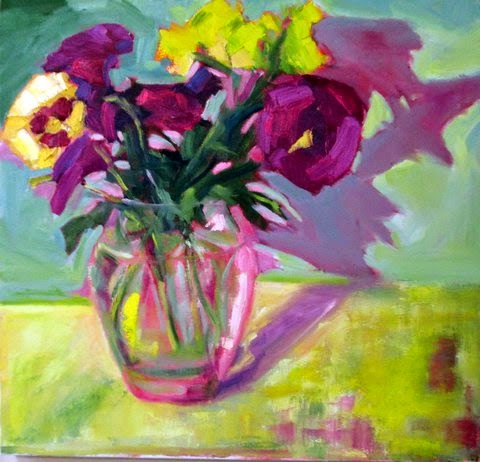New York City Marathon- the Art Edition
Anders Zorn and Philip Pearlstein at the National Academy or Art, Carrie Mae Weems and Italian Futurists and French Impressionists at the Guggenheim, Kandinsky, Picasso, Hopper, Matisse, Soutine and more at MOMA, oh my!!
It was a whirlwind trip to New York City last weekend to catch up with some very good college friends. Carole and I wandered around museums looking at art most of the day Saturday and Sunday morning. Here is just a bit of what's showing in Manhattan.
Anders Zorn at the National Academy of Art
 |
| In Wikstrom Studio-1889 |
This was such a good show of Zorn's oils, watercolors, gouaches, drawings and etchings. There were four rooms of his work in that lovely old mansion on Fifth Avenue. The above two images are oils and they are a study in the convergence of control and looseness. The value patterns and colors feel totally in control and in service of his idea for each painting. But the paint application feels so free and intuitive. It's kind of amazing really. There was a large gouache painting (on cardboard!) that one would think was an oil unless you read the label, it was created exactly the same way as the oils on canvas. His work is thinly painted in most areas, the drawing is very important and precise, the color palette is very limited and often monochromatic. Just a lot to think about and learn from when looking at this show.
Carole and I spent some time looking at the watercolors and wondering if Zorn used photographs for reference. To me, they looked exactly like photos that might have been made in that era, with sharp edges everywhere and the even color that was like an old tinted photo. So I had to research this right away and yes indeed we were correct, Zorn used photos to work from. His later watercolors do not have a photographic look and neither do the oils, although there is some evidence that the figures are from photos.
During this research I also discovered what paints Zorn used in that famous limited palette of his. Here they are:
- Lead White
- Light Ochre
- Dark Ochre
- Vermillion Red
- Black
- Chrome Yellow
- Colbalt Blue
- Viridian
 |
| The Waltz 1891 |
Also at the national academy was a small room of large Philip Pearlstein nudes in oil. They couldn't have looked more contemporary after viewing all those Zorn nudes, which after all are pretty romantic and idealized. Pearlstein's are anything but that.
more information on these shows here
Carrie Mae Weems, Italian Futurists, and Impressionists at the Guggenheim
Weems is a MacArthur prize winning photographer with art that looks at race and gender stereotypes and the control of history and culture by the groups in power. This was my first look at her work gathered into a big group. Lots to digest, she can make her point with the minimum of fuss, that's for sure.The Italian Futurists trailed all the way down the spiral ramp, but I was bored anyway.
Carrie Mae Weems information here
MOMA
Lots of wonderful art to see at MOMA, I just had a couple of hours there but it was great to see some of my favorites there, including the Kandinsky above, shown in a room with a set of four of them.
I got to spend time with four great old friends from Paier College of Art (graduated 1980). We sat in the sun in Central Park catching up on things surrounded by blooming trees and lots of people. My friend Anne has started a jewelry business, Carole is a photographer, and Mark creates as an Art Director. Some of us are in our second or third careers, but we all carry on and it's great to see it!
Anne's jewelry is here
Carole's photography can be found here
Mark's design portfolio is here





Comments
Post a Comment